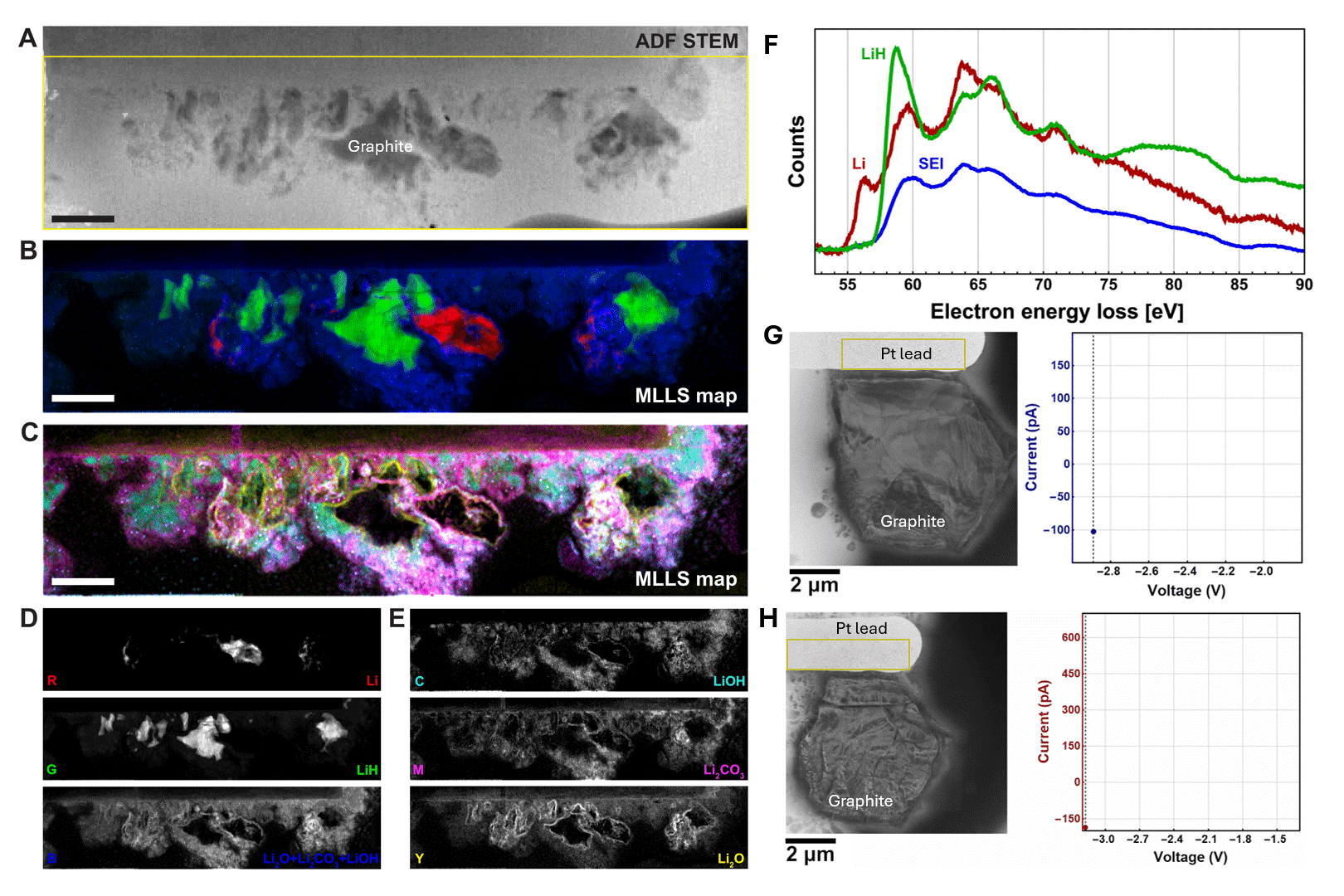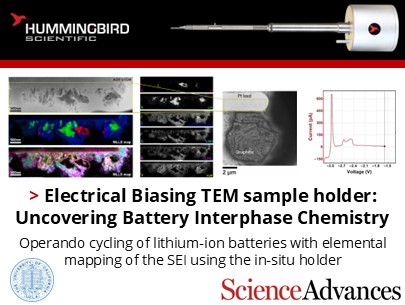How can the electrical biasing TEM sample holder uncover the hidden processes that drive battery performance in real-time?
Jared J. Lodico, Matthew Mecklenburg, B. C. Regan, and their colleagues at the University of California, Los Angeles published on their use of the Hummingbird Scientific in-situ electrical biasing TEM sample holder for capturing the dynamic behavior of lithium-ion batteries under electrical bias, shedding light on key processes affecting battery life and efficiency.

In-Situ Delithiation of Graphite Electrode (A) ADF STEM survey image of a graphite electrode with SEI formed after two lithiation-delithiation cycles. (B) RGB and (C) CMY MLLS composite images from a 102.4-eV bandwidth spectrum, with the field of view outlined by the yellow box in (A). (D, E) Grayscale MLLS images showing individual components of (B) and (C). Scale bars: 500 nm. (F) Background-subtracted Li core-loss signals derived from (D). (G) ADF STEM images of the first (G) and second (H) delithiation of the graphite flake synchronized with the CV, captured at 1 frame every 30 seconds (yellow box represents the region shown in A)
A custom-fabricated fluid cell integrated with silicon chips, featuring 20 nm-thick silicon nitride (Si₃N₄) windows and titanium/platinum (Ti/Pt) electrodes, was developed for in-situ electrochemical investigations. Graphite flakes were transferred onto the bottom chip, and a lithium perchlorate (LiClO₄) electrolyte solution was applied before sealing the cell under an argon atmosphere. This setup enabled real-time monitoring of electrochemical processes in the anode during charge and discharge cycles.
Scanning Transmission Electron Microscopy (STEM) imaging revealed the dynamic growth of lithium (Li) and lithium hydride (LiH) dendrites within the solid electrolyte interphase (SEI) layer. Electron Energy-Loss Spectroscopy (EELS) provided detailed, nanoscale chemical analysis, shedding light on the composition and evolution of the SEI layer—crucial factors influencing battery performance and longevity. Multilayer Least Squares (MLLS) analysis was employed to decompose the complex spectra, allowing for the identification and visualization of distinct components within the SEI layer. The study uncovered the intricate relationship between lithium intercalation, dendrite growth, and SEI layer dynamics, offering critical insights into the mechanisms driving battery efficiency and stability.
The Hummingbird Scientific in-situ electrical biasing TEM sample holder allows seamless integration of custom chip designs, providing powerful capabilities for real-time observation of dynamic processes at the nanoscale, advancing electrochemical research and battery development.
Reference: Jared J. Lodico, Matthew Mecklenburg, Ho Leung Chan, Yueyun Chen, Xin Yi Ling, and B. C. Regan, Science Advances 9, 28 (2023). DOI: 10.1126/sciadv.adg5135
Full paper From Science Advances under the Creative Commons license
View All News

